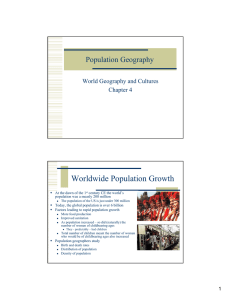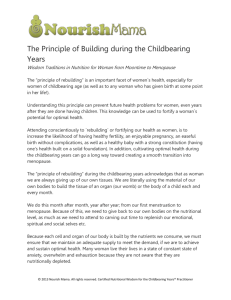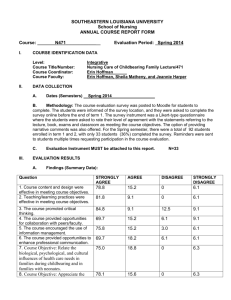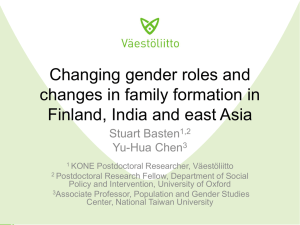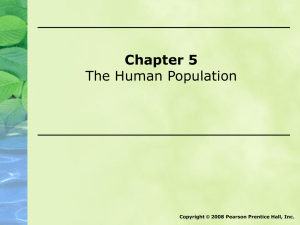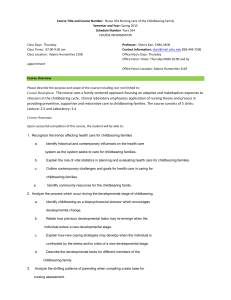Chapter 9: Stabilizing the Human Population
advertisement
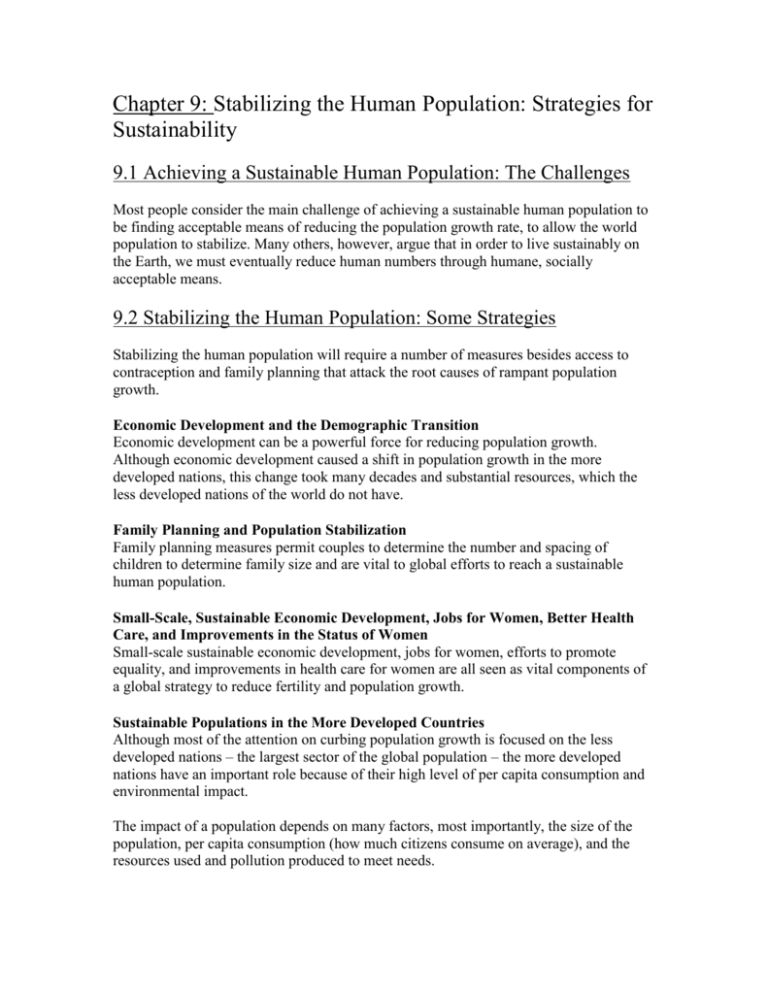
Chapter 9: Stabilizing the Human Population: Strategies for Sustainability 9.1 Achieving a Sustainable Human Population: The Challenges Most people consider the main challenge of achieving a sustainable human population to be finding acceptable means of reducing the population growth rate, to allow the world population to stabilize. Many others, however, argue that in order to live sustainably on the Earth, we must eventually reduce human numbers through humane, socially acceptable means. 9.2 Stabilizing the Human Population: Some Strategies Stabilizing the human population will require a number of measures besides access to contraception and family planning that attack the root causes of rampant population growth. Economic Development and the Demographic Transition Economic development can be a powerful force for reducing population growth. Although economic development caused a shift in population growth in the more developed nations, this change took many decades and substantial resources, which the less developed nations of the world do not have. Family Planning and Population Stabilization Family planning measures permit couples to determine the number and spacing of children to determine family size and are vital to global efforts to reach a sustainable human population. Small-Scale, Sustainable Economic Development, Jobs for Women, Better Health Care, and Improvements in the Status of Women Small-scale sustainable economic development, jobs for women, efforts to promote equality, and improvements in health care for women are all seen as vital components of a global strategy to reduce fertility and population growth. Sustainable Populations in the More Developed Countries Although most of the attention on curbing population growth is focused on the less developed nations – the largest sector of the global population – the more developed nations have an important role because of their high level of per capita consumption and environmental impact. The impact of a population depends on many factors, most importantly, the size of the population, per capita consumption (how much citizens consume on average), and the resources used and pollution produced to meet needs. The industrial nations can do many things to help build a sustainable future – for example, reducing their own growth, use of resources, and pollution. They can also assist less developed nations through financial aid, especially for family planning and sustainable development, and by sharing information and technical expertise. Creating Sustainable Populations in the Less Developed Countries Numerous private and governmental organizations such as the International Planned Parenthood Federation and the United Nations Fund for Population Activities spend millions of dollars a year to support programs to slow the growth of the population in LDCs through family planning and sustainable economic development. 9.3 Overcoming Barriers Three primary barriers lie in the way of achieving a sustainable human population: psychological and cultural, educational, and religious. Psychological Barriers In the less developed countries of the world, children are often seen as an asset to their parents, and childbearing enhances a woman’s social status. Having many children seems desirable because mortality tends to be high, too. These psychological factors contribute to larger family size and rapid growth. In more developed nations, children are valued, but are viewed as a bit of an economic drain, and a woman’s status is not so heavily dependent on childbearing. Educational Barriers As a general rule, the higher the level of education in a population, the lower its fertility rate. Education and careers that follow decrease the number of childbearing years and open up many options besides childbearing. Religious Barriers Religions influence population both positively and negatively. Some religions openly denounce efforts to control population growth; others openly support smaller families. Some have no official view. 9.4 Ethics and Population Stabilization Many people think that the right to have children is a fundamental personal freedom. Others believe that the collective rights of present and future generations to a clean, healthy environment and adequate food, shelter, and clothing supersede individual rights. 9.5 Status Report: Progress and Setbacks World population growth rates have declined impressively since the early 1960s, in many countries, both rich and poor. Unfortunately, approximately a third of this decline is the result of rising death rates, largely from AIDS. Population growth has resulted in a massive buildup of people in urban areas, who become susceptible to the spread of infectious disease. The fate of human civilization can only improve if we hold our numbers within the carrying capacity of the Earth.
